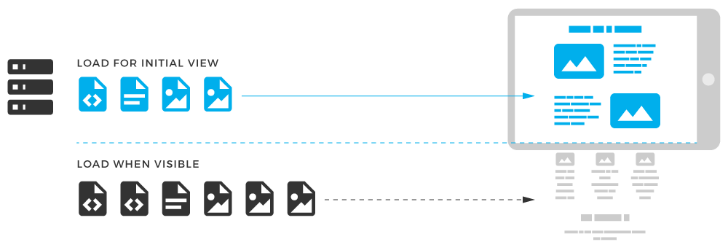The Chrome team seems to always be working on many ways to quicken page loading times and speed up our access to information. The latest proposed test, which hasn't been implemented yet, is a built-in Lazy Loading mechanism for images and iframes. According to the Google Chromium group, work is underway to test and implement this new feature in Chrome for Android.
What Lazy Loading really means is that the page you open will only load images and iframes above the fold (what you can see), thus speeding up the process so you're not stuck waiting for something at the bottom of the page to load. Speed improvements are expected to be around 18-35% as content below the fold won't load unless you begin scrolling down to it. Many websites have implemented a form of Lazy Loading by using Javascript libraries, but this would make the feature inherent to Chrome itself and not reliant on developers to use it on each website they make.
There are lots of concerns still regarding this feature, such as how it would coexist with the Javascript Lazy Loading scripts, how to make sure the entire content is ready before saving a page or printing it, and how to deal with intermittent connections where a user might go offline after only the top of a page has loaded. There's also the question of where specifically the cutoff of above/below the fold would be so that you don't scroll and see empty boxes instead of images then wait for things to load again. But it looks like the team behind it already has a few solutions in the works, like testing different cutoff thresholds (control, 0px, 1000px) and putting a placeholder of the same dimensions instead of the image/iframe so that the text or content doesn't jump around when they eventually load.
There's no specific timeline yet and the team still isn't sure of the reception of this feature and whether or not other Chromium browsers might follow Chrome's footsteps, but what seems to be certain now is that when the testing starts it will be on Chrome for Android (likely Canary or Dev first) and with different user groups.
Source: Google Chromium
Thanks: +Henny Roggy
Image Credit: StackPath

